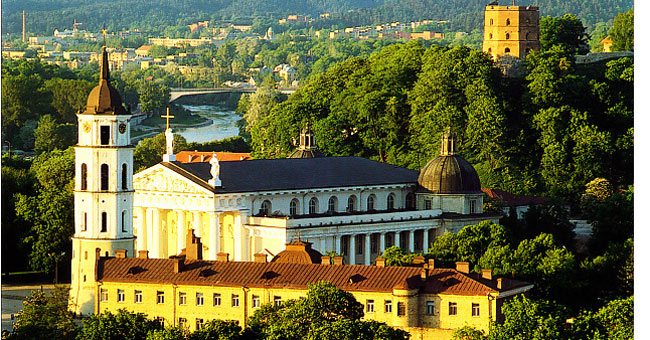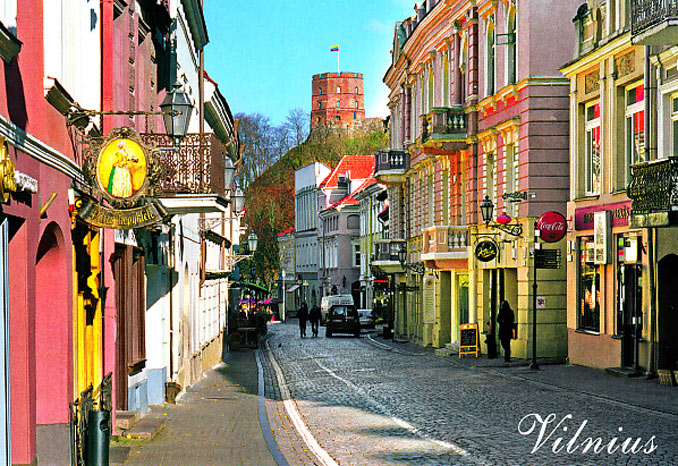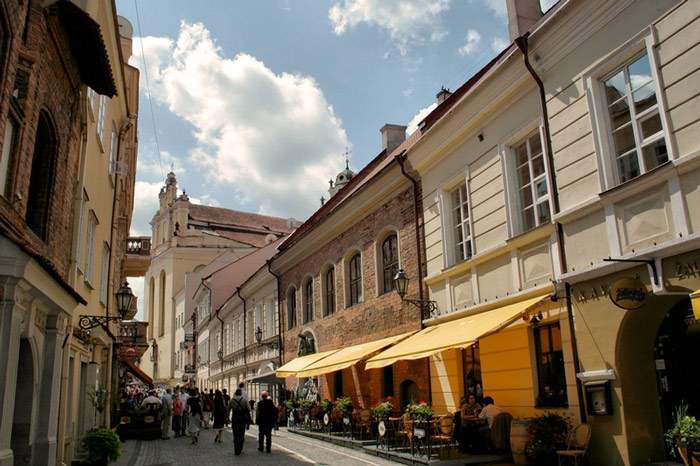Vilnius historical center
The Unesco Scientific, Educational and Cultural Organization has recognized Lithuania's Vilnius Calendar Center as a World Cultural Heritage in 1994.
Vilnius is the capital and the largest city of the Lithuanian republic. Despite the highly developed city tourism, Vilnius still retains its own identity of a Baltic city. The central area of the city with the old town and many beautiful buildings has been recognized by Unecso as a World Cultural Heritage in 1994.

Vilinius is located between the Vilnia and Neris rivers with a population of approximately 556,000 people. Speaking of Vilinius, visitors will visualize a peaceful, peaceful, peaceful Vilinius and valuable buildings. In Eastern Europe, Vilinius is always one of the top cities in terms of annual tourists. There are many interesting and interesting points in Vilinius, which must be mentioned first that is the historic center of the city.

Vilnius historic center consists of buildings built in Gothic, Renaissance, Baroque and buildings built according to the tradition of indigenous inhabitants. This historic central area was formed between the 13th and the 19th centuries. There are 1,500-year-old houses here, so Vilnius is home to the largest old town in Europe. Europe.

It can be said that Vilinius Historical Center is an important testament in the development of culture in general and architecture in particular in the large Eastern Europe. The urban face of Vilinius has a variety of styles, schools and at the same time a continuous development history that has inherited for 5 centuries.
Historically, this city had previously been continuously occupied and there was a conflict between the Baltic peoples against the German invaders. Until the 13th century, Lithuania's first capital was established here and named Grand Duchy . Several buildings have been built since the first days of the city. The buildings built during this period were mainly built with bricks. In 1471, a fire broke out and damaged most buildings in the city. Efforts such as Xitoo Monastery, Saint Francis Church, etc. were completely destroyed, the only building to be imprinted from the early construction period was the city wall and the defensive area below. .

In the years 1503-1522, the reconstruction was carried out, but due to various reasons and a further battle, it failed. Until 1579, new constructions were carried out, many important works were built at this time such as: St Michael's Church; St Stephen's church; St Theresa Church; All Saints Church . At this time in Vilinius there were more than 40 religious works including churches, monasteries . but until the war with the Russian army occurred (1654-1667), some works The process of which was destroyed or damaged. Others were burnt in fires in 1715, 1737, 1748, 1749. After being burned, these buildings were quickly repaired so that these works are still retained so far. Although there are works that are no longer original, others are fixed in new Baroque styles. During the second world war, more than 80 old houses in the area were heartily destroyed. It was not until the end of the war that a new restoration project was carried out and the renovation took place between 1956-1958 and 1970-1974.
 Gediminas Castle was built in the 13th century with red bricks.
Gediminas Castle was built in the 13th century with red bricks.
The most typical buildings in Vilnius' historic center can be mentioned: Churches, City Halls, castles, central squares and old houses. Most works in the historic center area are built in Gothic, Renaissance and some are later repaired in Baraque style.
Prominent in the central district is Gediminas castle , this is a 13th-century castle built with red bricks. The castle was built on top of the hill, now tourists can walk or use the cable car system to visit this castle. Gediminas castle image is the symbol of Vilinius city in particular and Lithuania in general. This image is not only printed on Lithuania's monetary system but Gediminas castle also appears very much on the works of art, pictures, poetry, poetry .


Theotolos cathedral and st.Ann church with beautiful and striking architecture in the old town Vilinius.
Theotolos Cathedral is also an important building in the old town area. The cathedral was built in 1346, is now one of the attractions that attract tourists to Vilinius. Besides that, Vilinius' oldest church was St.Nicholas church built in 1300. St. Ann's church is a church built in Lithuania's most beautiful Gothic style.
It is not too much to say that Vilinius is the capital of the church and the museum. Tourists come here often, saying that just 10 steps away will see a museum or a church. The museums at Vilinius are mostly free to enter, so it is not surprising that tourists find that the people in Vilinius are very knowledgeable and love art.
One of the four Unesco -recognized legacies, the Vilnius Historical Center is the most famous and well-known heritage in Lithuania.
- Macau historical center
- Riga historical center
- Historical center Bridgetown and Garrison - World cultural heritage in Barbados
- Historical images cannot be forgotten about Tax Trade Department
- Historical center of Vienna
- 11 famous historical events thought to be real but were fictional
- 5 famous historical places are haunted
- Surprised with rare historical series hard to find
- 15 impressive historical moments
- 4 historical facts that many of us don't know about
- Italy inspired a strong historical earthquake
- Time's most influential photos of all time
 Suzhou classic bonsai garden - China
Suzhou classic bonsai garden - China Chau Nguyen Dynasty
Chau Nguyen Dynasty Thai Son Mountain - World Wonder
Thai Son Mountain - World Wonder Ancient villages of Shirakawa-go and Gokayama
Ancient villages of Shirakawa-go and Gokayama